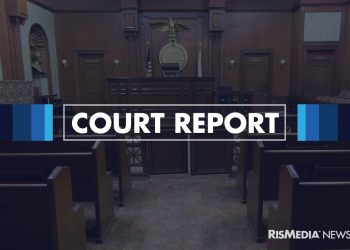RISMEDIA, January 12, 2009-Less than 24 hours after members of the 111th Congress were sworn into office, the National Association of Home Builders (NAHB) launched an all-out effort to make housing a centerpiece of the massive economic stimulus package that lawmakers are expected to complete by mid-February.
More than 80 builders from across the country converged on Capitol Hill yesterday to meet with the congressional leadership and key members of the banking and tax-writing committees to convey the message that a housing stimulus is urgently needed and that restoring demand for housing is the fastest and most effective way of reviving the economy.
The key ingredients to the recovery plan call for Congress to support enhancements to the home buyer tax credit, to provide below-market interest rates on 30-year fixed-rate mortgages and to continue foreclosure prevention measures such as those advocated by Federal Deposit Insurance Corporation Chairperson Sheila Bair.
Underscoring the urgency of the situation, in a briefing to builders before their meetings with lawmakers, NAHB Chairperson Sandy Dunn said: “Our industry stands at a crossroads and our efforts here today are vital to the housing industry’s ability to weather this storm and come out the other side healthy and in a position to grow.”
“Congress must understand that housing is central to the economic crisis, that housing has led our nation out of past recessions and that it can do so again,” she added.
NAHB President and CEO Jerry Howard stressed that NAHB, as leader of the Fix Housing First coalition-which consists of more than 600 organizations, home building companies and manufacturers-was marching to Capitol Hill to show a united front.
“The message we are sending to Congress — there are no large builders, no small builders, no low-income builders, no suppliers and no manufacturers,” he said. “We’re all in this together and we are all focused on the stimulus package. We are talking to our members of Congress about a proposal crafted over the past several months that will fix both the supply and demand side of housing.”
“Over the next year, the stimulus plan will increase economic activity in every state as vacant homes are absorbed, households are able to relocate to new jobs, home values are stabilized and local property tax revenues return to their pre-recessionary levels,” said NAHB Chief Economist David Crowe.
This year alone, Crowe said the plan would result in 200,000 additional new home sales, 1 million more existing home sales and a boost in expected housing starts from 649,000 to 908,000, on par with last year’s level.
In addition, the plan this year would create more than 539,000 jobs, generating $26 billion in wages and salaries, $21 billion in business income and $28 billion in federal, state and local tax revenues.
“The excess housing inventory in today’s market is the result of unprecedented foreclosures, not overbuilding. That’s why we support Sheila Bair’s foreclosure relief plan and any common-sense proposal to alleviate the foreclosure problem,” Howard said.
To underscore this point, single-family housing starts as of November 2008 were at 441,000, the lowest level on record and a decline of 76% from the peak in January of 2006. In addition, an increasing share of new single-family homes were being built under contract for the owner and not speculatively.
Under Bair’s plan, the federal government would provide $24 billion in loan guarantees that could help as many as 1.5 million home owners modify their existing mortgages and avoid foreclosure.
Putting the situation in starker terms, Crowe said that barring any significant federal action, 4 million strapped borrowers could lose their homes this year. “There are at least 1.5 million excess empty homes on the market today. That does not include homes people live in and want to sell,” he said.
In order to stabilize the marketplace and put a floor under declining home values, NAHB and the Fix Housing First coalition are calling on Congress to pass short-term, targeted incentives that spur demand and encourage Americans to buy homes.
Specifically, a temporary, expanded home buyer tax credit is needed to reduce excess inventory and encourage fence sitters to enter the market. The Fix Housing First legislative proposal calls on Congress to enact a stimulus plan that would reduces mortgage interest rates to as low as 2.99% on 30-year fixed-rate conventional loans purchased between Jan. 1, 2009 and June 30, 2009. The interest rate would be 3.99% for contracts that close between July 1, 2009 and Dec. 31, 2009.
At the same time, lawmakers need to make the current $7,500 home buyer tax credit much bigger and better, eliminating its recapture provision and making it available to all purchasers. The coalition is calling for a credit amounting to 10% of the home’s price, capped at 3.5% of local FHA loan limits. This would range between $10,000 and $22,000.
The key is basing the credit amount on prices in each locality.
“Obviously, you don’t need a $22,000 credit in Bozeman, Montana but a $22,000 credit will just get you into the marketplace in California,” said Howard.
The tax credit and interest rate buy-down are not new ideas, Howard added. “Congress enacted a similar housing solution in the mid-1970s when the nation was in recession. The plan led us out of recession then, and it can do it again.”
Bolstering the visits to Capitol Hill, more than 17,000 telephone calls and e-mails in support of the Fix Housing First proposal were received by the Congress from members of NAHB and the coalition.
To learn more about the coalition, go to www.fixhousingfirst.com.










